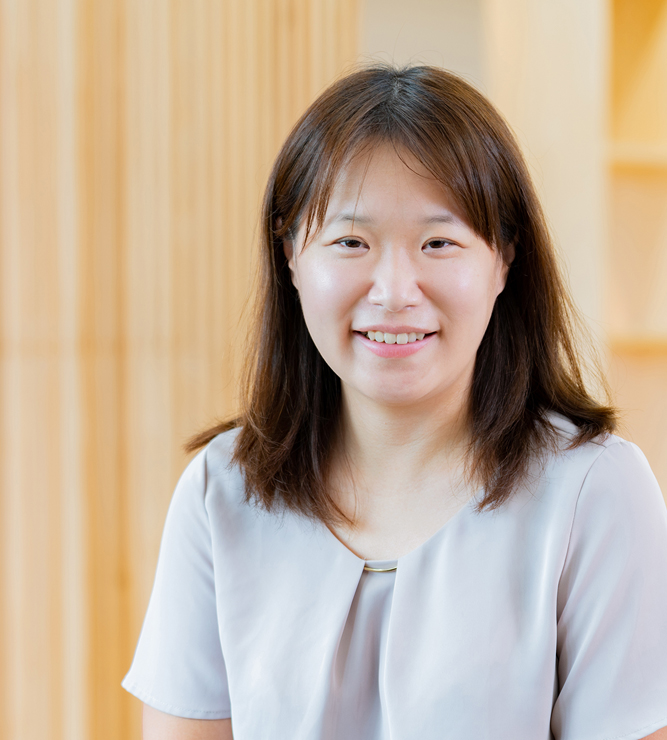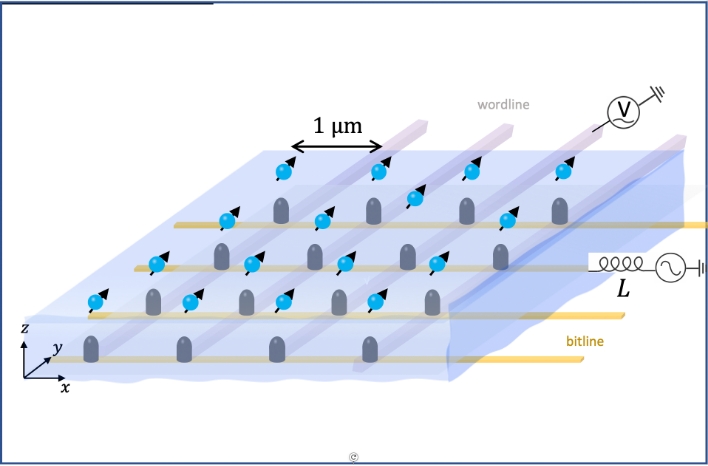
Erika Kawakami
RIKEN Hakubi Team Leader, Floating-Electron-Based Quantum Information
RIKEN Hakubi Research Team
Outline
We study floating electrons on the surface of liquid helium, especially in terms of its application to quantum computation. This physical system is free of defects or impurities, since the electrons exist in a vacuum. Thanks to its cleanliness, the quantum states of the electrons on helium are expected to have a long coherence time, which provides a perfect platform to realize qubits with. We have worked on the hydrogen-like quantized states (Rydberg states) of many electrons so far and eventually we aim to control the spin state of a single electron.
Besides the project of making qubits, we are also interested in simulating an exotic state called spin liquid making use of a Wigner crystal of electrons on helium.
Furthermore, we also aim to realize electronic circuits that are indispensable for a scalable quantum computer. Currently, we are developing a cryogenic microwave source.
Research Theme
・helium quantum computer
・cryogenic microwave source
・simulation of spin liquid
Representative Research Results
・Image-charge detection of the Rydberg states of surface electrons on liquid helium.
E. Kawakami, A. Elarabi, D. Konstantinov, Physical Review Letters with Editors’ Suggestion, 123,
086801 (2019).
・The impact of classical control electronics on qubit fidelity.
J.P.G. van Dijk, E. Kawakami, R.N. Schouten, M. Veldhorst, L.M.K. Vandersypen, M. Babaie, E.
Charbon, and F. Sebastiano, Physical Review Applied, 12, 044054 (2019).
・Gate fidelity and coherence of an electron spin in a Si/SiGe quantum dot with micromagnet.
E. Kawakami, T. Jullien, P. Scarlino, D. R. Ward, D. E. Savage, M. G. Lagally, Viatcheslav
Dobrovitski, Mark Friesen, S. N. Coppersmith, M. A. Eriksson, and L. M. K. Vandersypen,
Proceedings of the National Academy of Sciences 113, 42, 11738 (2016).
・Electrical control of a long-lived spin qubit in a Si/SiGe quantum dot.
E. Kawakami, P. Scarlino, D. R. Ward, F. R. Braakman, D. E. Savage, M. G. Lagally, Mark Friesen, S.
N. Coppersmith, M. A. Eriksson, and L. M. K. Vandersypen, Nature Nanotechnology 9, 666-670
(2014).

A scalable helium quantum computer. Each electron (blue circle) serves as a qubit. They are lined up in a two-dimensional array. Electrons on helium can naturally have a long-range interaction (Coulomb interaction), which is relatively large (~0.5 GHz) even if they are separated by as far as ~1 um. This interaction is made used of to realize a two-qubit gate.